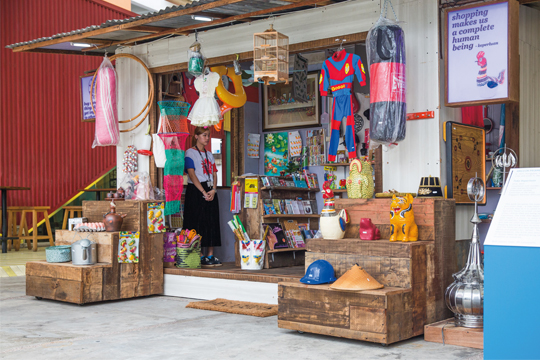SINGAPORE BIENNALE 2013: IF THE WORLD CHANGED
| December 25, 2013 | Post In LEAP 24

Dimensions variable
Collection of the artist
As the financial hub of Southeast Asia, Singapore has clear cultural ambitions within the region. With the fourth Singapore Biennale, the primary aim is the study and display of Southeast Asian curatorial thought. The theme, “If the world changed,” is about imagining how Southeast Asian artists would respond to internal and external change in the twenty-first century. This is a fresh and contemporary theme, but when put with the description in the catalogue it seems unclear. “Southeast Asia” is a broad term, mostly viewed not in terms of geographical space but as an ambiguous, culturally plural concept. The Singapore Biennale sets out to deal with a particular problem: when an artwork is usually understood and discussed in a particular historical or cultural context, will the viewer actually be able to envisage the relationship between the two?
The most discussed aspect of this exhibition is that, unlike in previous years, when the artist’s chances of being selected were in the hands of only two or three curators, the works this year were jointly selected by 27 curators from across Southeast Asia. Furthermore, the works are not arranged by geographical location but are instead spread out across different exhibition spaces—no such thing as a national pavilion here. This curatorial strategy lets the individuality of the works come through but removes any opportunity for dialogue between them. The key term “Southeast Asia” becomes in any single work an empty idea, merely rhetoric.
There is no shortage of concern for regional social and political issues. On the second floor of the Singapore Art Museum is Filipina artist Nikki Luna’s installation Tiempos Muertos (2013). Nearly 1000 “diamonds” made from sugar are displayed in glass cases, like luxury goods, on three sides of the space. They reference the low-cost labor used in sugar production in the Philippines and the profits made by the plantation owners. Malaysian artist Adrian Ho’s painting Fruits of Life (2013) examines and documents with a poetic eye the jungles of Borneo brutally cleared by companies exploiting them for palm oil production. Cambodian artist Khvay Samnang’s five-channel video Untitled records his actions at public lakes in Phnom Penh—he first submerges his head underwater then uses a bucket of sand to splash his head in protest against the government’s policy of allowing lakes to be filled and sold off to private owners. In the large hall on the main floor are three sculptures by Vietnamese artist Tran Tuan (Forefinger, 2013). These “forefingers” made from different materials represent sacrifices made in the Vietnamese war: in order to avoid the draft, men would cut off their forefinger so that they could not pull the trigger of a gun.
Indonesian artists stand out in terms of social involvement. The video installation by the post-70s collective Irwan Ahmett and Tita Salina (Urban Play, 2013) records how they took art to the streets of Jakarta, London, and Singapore over the last three years; for example: placing a squeaky toy under a paving slab and recording people’s reactions, or walking across a pedestrian crossing on the backs of motorcycles parked across it—in other words, turning the city into an artwork. Outside the Singapore History Museum Indonesian architect Eko Prawoto has erected a group of three linked volcanoes built out of bamboo. As they pass through the structure, visitors can feel the sun coming through the mouth of the volcano and see the bamboo patterns it casts on the grass. In the hubbub of the city, the traditional Southeast Asian building materials of bamboo and rice straw provide a space for quiet reflection.
As for the Singaporean artists: their work is always distinctive, their cosmopolitanism apparent. This is clear from their use of international artistic language and familiarity with its concepts—at least according to our formalized understanding of contemporary art. The Singapore Biennale does not lack in global vision or ambition, and is well funded to boot. What it does lack is the ability to make sense of the jumble that is “Southeast Asian” art. By trying to treat each place fairly, they have ended up with something that mostly resembles a high quality art fair.


